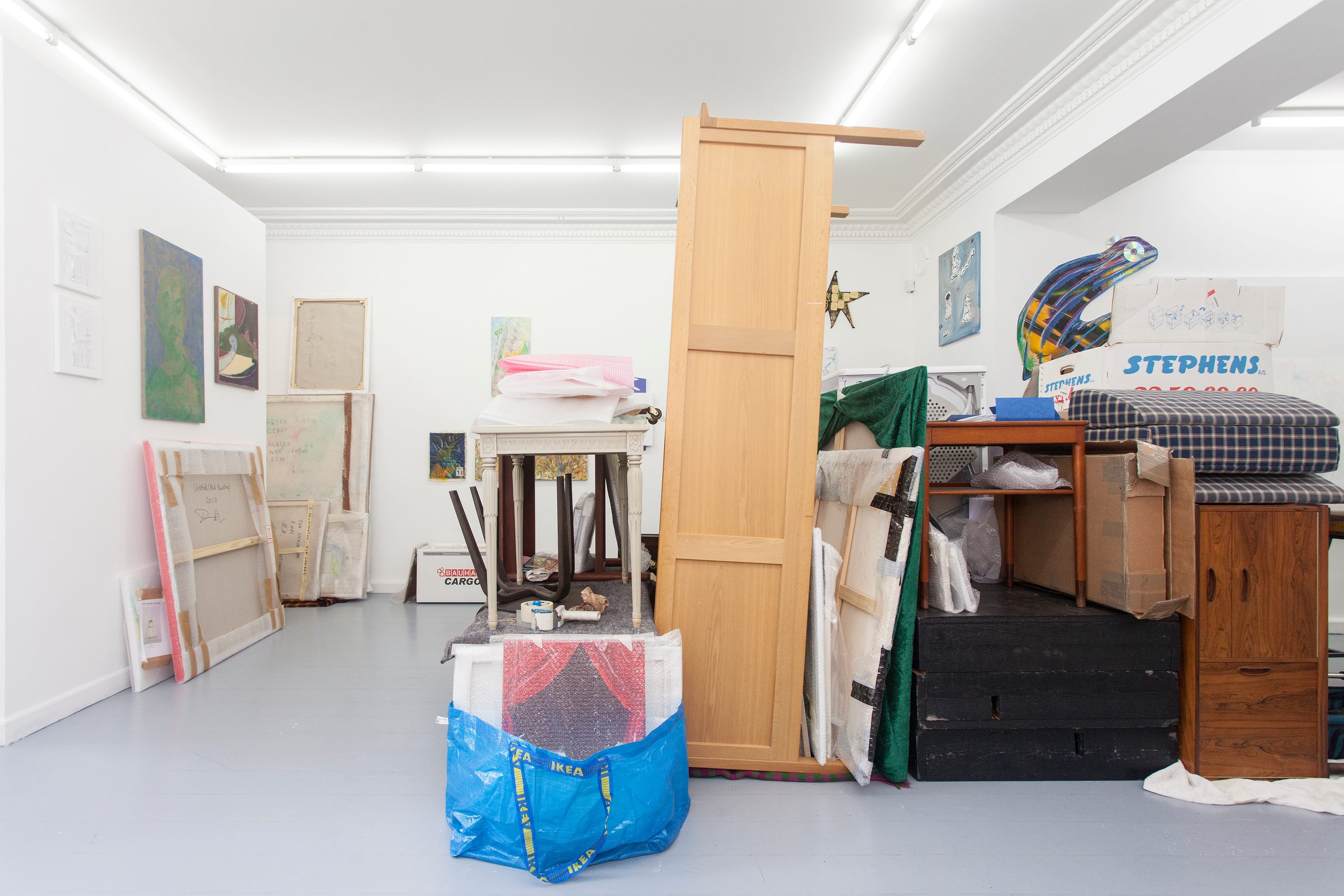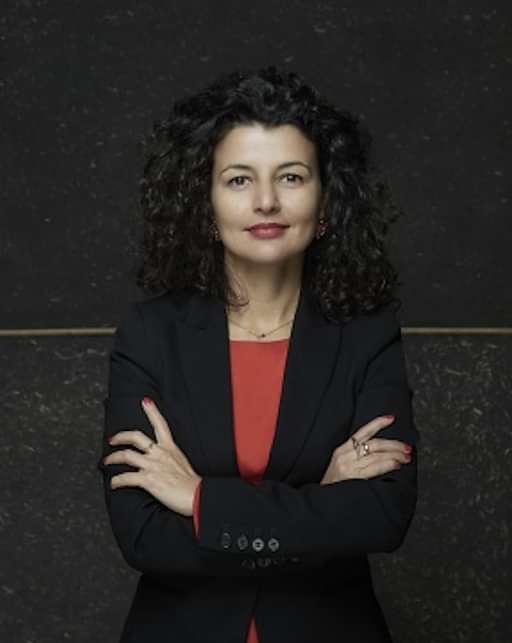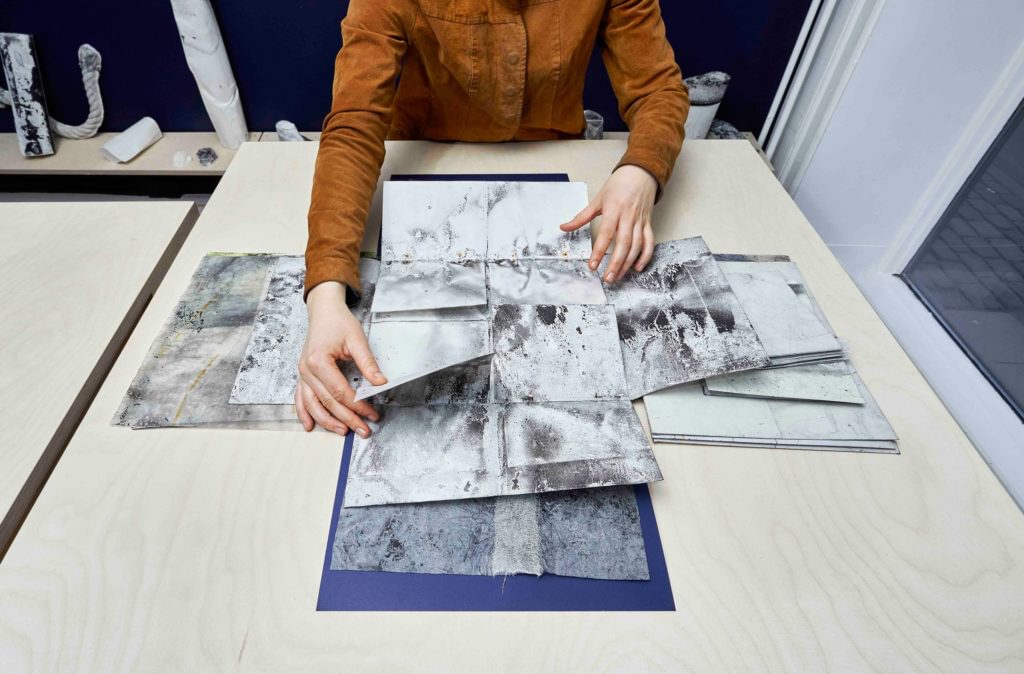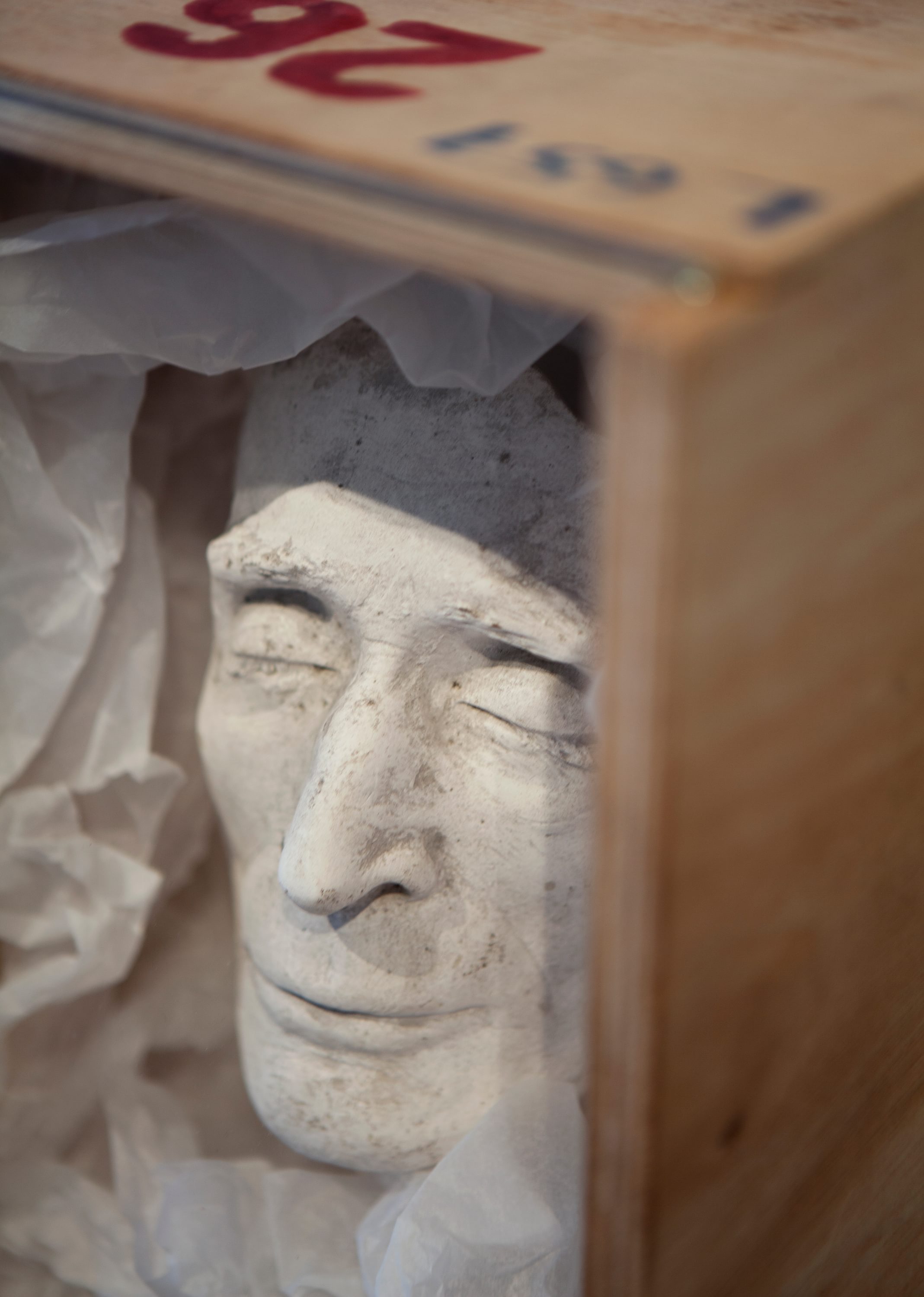Since the beginning, JIR SANDEL has been pursuing both a playful and critical approach towards the programming of exhibitions and the production of exhibition materials. Their enjoyment of the interplay between the familiar and the strange extends from their choice of name, to the artworks they display, the venues they exhibit in (e.g. a house or a restaurant) and the conversations their exhibitions trigger.
How did you start JIR SANDEL? Why did you choose a name that echoes a fashion brand?
Artists Mads Lindberg and Magnus Frederik Clausen started JIR SANDEL in 2016 as an umbrella organisation in order to provide a platform where a new approach to art, and painting in particular, would be possible. Appropriating a well-known name and logo of a fashion brand serves as a fun and weird glitch in the matrix of visual identities. It makes you feel like you already know about JIR SANDEL, however you are unable to place it, and contrastingly it feels familiar. The logo of the fashion brand is buried deep in our subconscious, yet there is something wrong, it does not read the same way, the letters might be misplaced. We swapped places of the letters “L” and “R”. This kind of stupid, yet effective gesture emerged from an ongoing gag between Mads Lindberg and our graphic designer Andreas Peitersen; to swap those letters in famous brands; Lalph Rauren, Bulbelly of Rondon, Fled Pelly.
In late 2018 writer/curator Paola Paleari and artist Rasmus Høj Mygind joined the JIR SANDEL team.
Can you talk about the artist community you have been working with so far? How do you invite artists to show with you?
We operate 100% out of personal interest. There are no exhibitions if one or more of the four of us are not excited to make it happen. This is possible for us as a place that is not commercial in the traditional sense. Meaning that we can pause and not organise exhibitions in continuum. We don’t seek quantity.
What is the promise/premise of the initiative?
We promise to care about the artist, artwork and our exhibitions, since we have no reason to make a show unless we do it out of excitement. The premise is derived from that same, very natural, M.O.
How do you see the contemporary art scene evolving in Copenhagen?
Towards more and more de-centralization.

Front cover of the newspaper published for the occasion of Landscape Modern Oil Painting Canvas Painting Abstract Oil Painting Wall Hanging. Download publication: https://media.contemporaryartlibrary.org/store/doc/3591/docfile/original- e4de158df323dea632d8febb7da344ea.pdf

Installation view from Landscape Modern Oil Painting Canvas Painting Abstract Oil Painting Wall Hanging, JIR SANDEL at Benoni, 2017.
Photo by Kristian Touborg
In the exhibition titled "Landscape Modern Oil Painting Canvas Painting Abstract Oil Painting Wall Hanging", you lay out an interactive exhibition model where audiences are encouraged to approach the gallerist to access the works that they would like to see, that they have identified through the inventory. The everydayness of the setting, juxtaposed with the senselessness of the cumulation of bodies of art at a commercial gallery is unruly yet curious. Can you please talk about your approach, with this example in mind?
That show was conceived and curated by Magnus and Mads. The idea was to set up a scenario where the visitor is encouraged to establish a dialogue with the gallerist/assistant in order to view the work. This semi-forced breaking of the ice between the viewer and the artwork (and the gallerist), so to speak, is something we in general are interested in. How can we, without 'lowering the bar', encounter an artwork and have a conversation about it, in a landscape where many of the visitors would never ask the gallerist/exhibitor a single question. There is this weird apprehension for many people when it comes to asking about the work, even for the ones who are familiar with the art world. At JIR SANDEL we think this is exactly where most of the interesting social and 'intellectual' encounters with art happen. For this very reason having an exhibition space in the apartment of Magnus and Paola of JIR SANDEL for the last few years has been wonderful in terms of breaking the ice and catalysing great conversations with visitors. The familiarity of being in someone's home (the space was located in a separate AirBnB-section of two old apartments merged together) and feeling invited in, offers far less tension and hesitation.
You follow a playful approach, for example in the "Recreational Paintings" show by Mads Lindberg with the audio file as press release that features “Herman the hermit crab”, and a nonsensical/generic interview for "Yey An Unusual Way of Spelling Yay. ^-^" as well as your responses to reviews in art magazines. Are you pointing to the fact that press releases have become futile or that there is a need for expanding what the exhibition holds through text and audio components?
We like a good text as much as the next exhibition space. However, as you allude to, the exhibition text can often be quite boring and superfluous. Facilitating that 'space' to include something that is more an expansion of the show instead of a commentary, is something we appreciate.

Installation view from Recreational Paintings by Mads Lindberg, JIR SANDEL, Los Angeles, 2018.
Photo by JIR SANDEL
You employ multiple strategies in your exhibitions, from overlaying, to juxtaposition, using a multitude of platforms to expand on the everydayness of social interaction. While doing so, I observe that you are addressing the value of artistic practice and what its visibility brings to the notion of art. Would you agree?
Yes ;)
Art encounters lie in the heart of the conversation art generates, this is what I derive from your projects to date, that each project is a conversation either with the venue, the other works of art or other social contexts. Is this the reason that you have a nomadic profile, you take over existing commercial galleries, Chinese restaurants and other art institutions?
Sure, that, and a very practical approach to space and rooms. We need a context for presenting works/exhibitions. White cube gallery spaces are expensive to run and maintain (which two of the four of us have done in the past) and that part of the business of running a space is something that none of us are interested in. So we find it constructive and energizing to have the need to work around that issue. Soon we will be moving into quite an unusual exhibition space for a new period of time. Stay tuned ;)

Installation view from JIR SANDEL DINING AT LI'S with Rasmus Høj Mygind and Maria Wæhrens, 2019.
Photo by JIR SANDEL
Sounds exciting! Can you talk about agility and spontaneity in regards to running JIR SANDEL? Do you think of this as a counter-constructive position to today’s large scale art institutions and museums?
Spontaneity is a keyword for us. It rhymes with energy and flow. And for us to be able to work like that we need to keep our set-up and maintenance fairly simple. This setup is not to be confused with small or unambitious initiatives/exhibitions/events/happenings.
What are your ambitions for JIR SANDEL? Let's imagine a not so distant future, 2025 for example. What would you like to see when you look back?
We want to keep making exhibitions that we ourselves want to see. Obviously. That includes doing things that are not necessarily fashionable at the moment. We like to be down to earth about the artworks we show and help people who want to live with the work figure out how to acquire it. As the art scene is becoming de-centralized, it becomes more important that people who want to invest and live with artwork, have more resources to receive guidance. It can feel like a bit of a jungle in this little, big art world.

Fatoş Üstek is an independent curator and writer, based in London. Ustek acts as editorial advisor and contributing editor to Extra Extra Magazine, board member of Urbane Kunste Ruhr, Germany; advisory panel for Jan van Eyck Academie, Netherlands. She was jury member for Turner Prize Bursaries 2020, Arts Foundation Futures Award 2021, Scotland in Venice 2022, Dutch Pavilion 2022, and acted as an external member of the acquisitions committee for the Arts Council Collection (2018-2020). She was Director of Liverpool Biennial, Director and Chief Curator at Roberts Art Institute (formerly David Roberts Art Foundation). She is the curator of Do Ho Suh’s largest UK commission (2018-2020).



